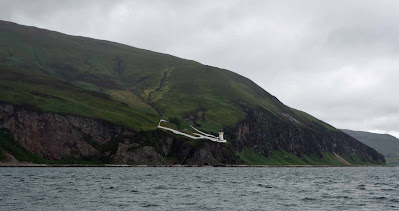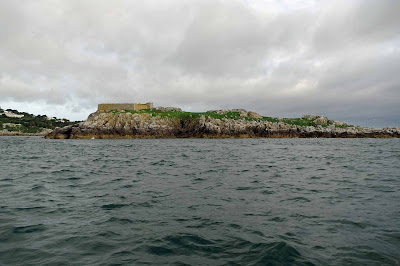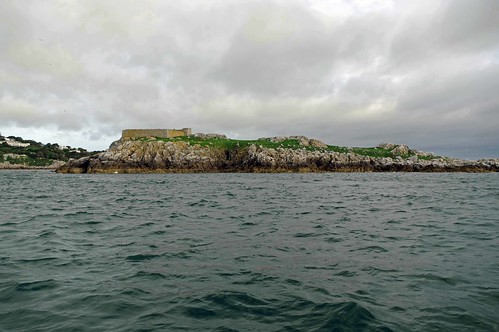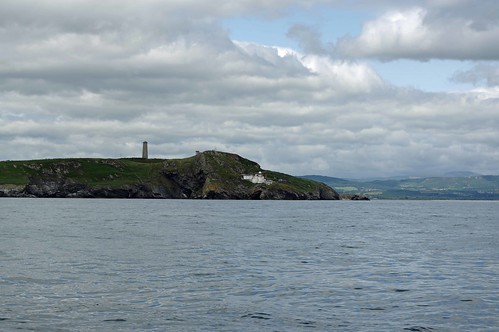My pre-planned alternate was to go via Lock Spelve on the south-eastern side of Mull which is a safe anchorage but very isolated and with a spell of bad weather forecast I decided, if possible, to get into the Sound of Mull on the first day where there are some good anchorages a couple of which have shops etc. within dinghy reach.
The trip fell into three parts, a boring and initially cool trip motoring north past Colonsay towards the south side of Mull avoiding the “Great Race” to the east that stretches several miles west of Corryvrecken, as I drew close some wind filled in and it was a pleasant sail along the coast past Loch Spelve to Lock Dun by which time I was making 5 – 6 knots running using the cruising chute flown from the pole as a spinnaker.
 |
| Lady's Rock light, Firth of Lorn with the entrance to the Sound of Mull to the left. |
Then things started to get a bit “interesting”, fighting a 2 - 3 knot tide and on the edge of over-falls between Lithmore Island and Mull the wind started to increase and within 2 miles I had gone from running with the spinnaker to broad reaching with two reefs in the mainsail and two in the headsail and still making 5 – 6 knots in 20 – 25 knots of wind.
 |
Passing Glas Eileanan (Grey Isles) using the narrow southern channel into the Sound during one of the lulls in the wind. |
In the Sound the wind was very variable, coming down from the mountains on Mull, one minute it would be 20 knots the next 5 to 10, but I made good time and was approaching the entrance to Tobermory about 5:30 to find a drama unfolding for a yachtsman.
 |
| A bit breezy approaching Tobermory |
I had heard one side of a conversation with the coastguard and a lifeboat but the high hills had prevented me hearing the other half or seeing the lifeboat on AIS (Automatic Identification System) until I was quite close. A yacht had run aground on the lea shore just south of Tobermory and was being pulled off, with some difficulty by the life boat. At least they had a rising tide which helped.
 |
The Tobermory "Severn Class" lifeboat preparing to tow off a grounded yacht, their inflatable “Y boat” with 2 crew is alongside. |
Monday does not look promising at the moment, but there may be a short window to move further north, but Ardnamurchan point has a reputation for rough seas and much of the route is exposed to the Atlantic weather and waves so caution is needed.
 |
| A pretty Harrison Butler (Z4) at Tobermory. |
 |
| And a not so welcome albeit colourful visitor. |
57 nautical miles in about 12 hours.
Slide show all of my pictures from Loch Talbert to Tobermory. Page through by clicking the arrows or click in the centre of the pic to view from Flickr in a new window or full screen:













































